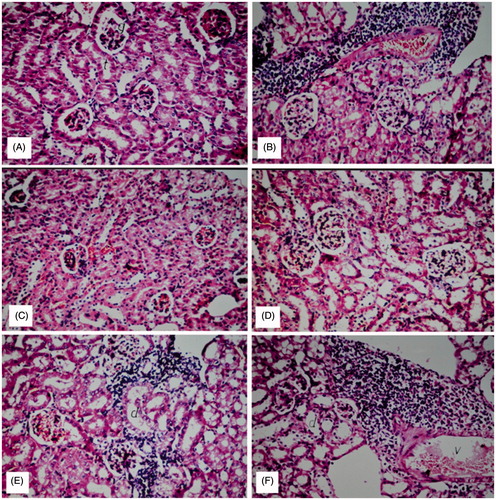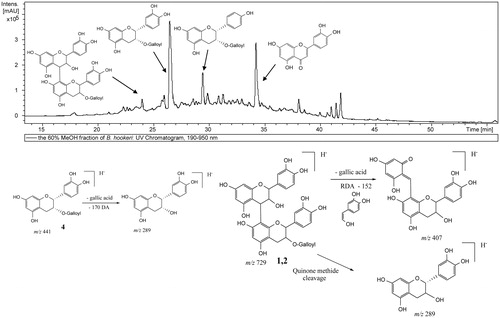Figures & data
Table 1. LC-PDA-ESI/MS/MS Identification of the major constituents of BHPF.
Figure 2. Effect of BHPF and silymarin on the hepatic function tests of CCl4-intoxicated mice. Data are expressed as the means ± SEM (n = 8). BHPF 1, 2 and 3: 100, 200 and 400 mg/kg of BHPF, respectively. Values having different superscripts are significantly different at p < 0.05.
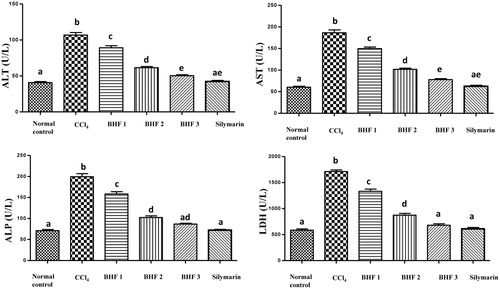
Table 2. Effect of BHPF on biochemical parameters of CCl4-intoxicated mice.
Figure 3. Effect of BHPF and silymarin on lipid peroxidation and antioxidant parameters in the liver and kidney of CCl4-intoxicated mice. Data are expressed as the means ± SEM (n = 8). BHPF 1, 2 and 3: 100, 200 and 400 mg/kg of BHPF, respectively. Values having different superscripts are significantly different at p < 0.05.
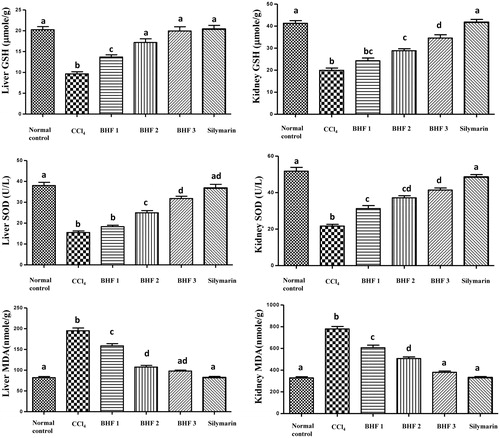
Figure 4. Hepatoprotective effect of BHPF in CCl4-intoxicated mice. (A) Group I (normal control): showing normal histological structure of the central vein and intact hepatocytes. (B) Group II (CCl4-treated group): showing severe loss of hepatic architecture with multiple focal necrosis, ballooning degeneration in the hepatocytes. (C) Group VI (CCl4 + 200 mg/kg of silymarin): showing absence of histopathological alterations. (D and E) Groups V and IV (CCl4 + 400 mg/kg and CCl4 + 200 mg/kg, respectively of BHPF): showing normal histological structure. (F) Group III (CCl4 + 100 mg/kg of BHPF): showing diffuse Kupffer cell proliferation in between the hepatocytes (H&E, × 20).
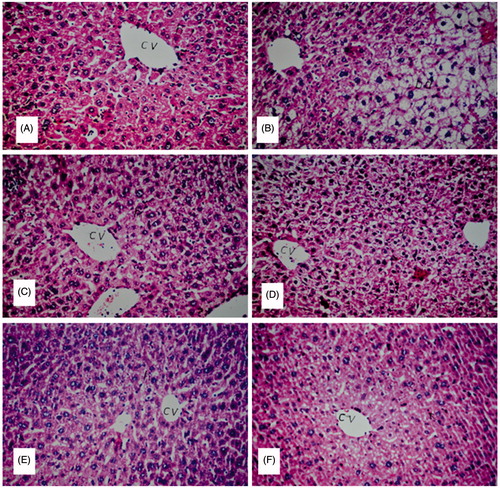
Figure 5. Nephroprotective effect of BHPF in CCl4-intoxicated mice. (A) Group I (normal control): showing normal histological structure of the glomeruli and tubules at the cortex with absence of histopathological alterations. (B) Group II (CCl4-treated group): showing marked inflammatory cell aggregation in between the tubules, marked degeneration in the lining epithelium of all the tubules, and blood vessel congestion. (C) Group VI (CCl4 + 200 mg/kg of silymarin): showing absence of histopathological alterations. (D) Group V (CCl4 + 400 mg/kg of BHPF): showing normal histological structure. (E and F) Groups IV and III (CCl4 + 200 mg/kg and CCl4 + 100 mg/kg of BHPF, respectively): showing mild inflammatory cell infiltration in between the tubules (H&E, × 20).
